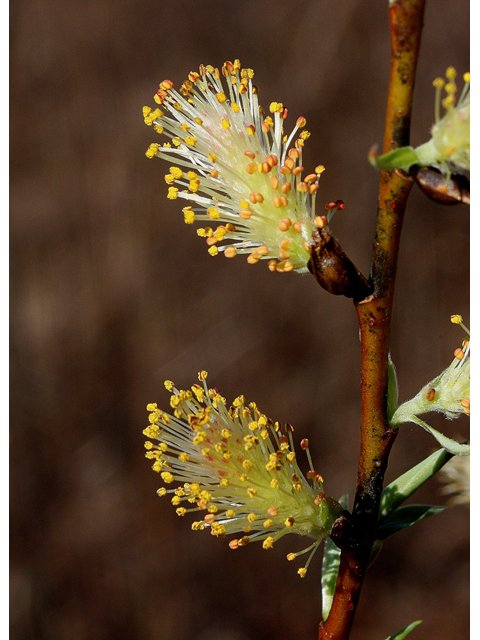 Image 1 of 2
Image 1 of 2

 Image 2 of 2
Image 2 of 2



Salix sericea (Silky Willow)~In-Store Only
GARDEN SITE: ⛅ Consistently moist to standing water. Prefers less than 6 hours of sunlight daily.
SIZE: 6-12 ft. SPREAD: 6-12 ft.
FLOWERS: Yellow-green. May.
WILDLIFE: Supports various species of pollinator larvae. Attractive to native bees and honey bees. Nesting site for birds.
LARVAL HOST TO: Viceroy and Acadian Hairstreak.
ZONE: 4-8
DISTRIBUTION: Eastern United States
Silky Willow is a native shrub or small tree that has recently gained the attention of botanists and landscape professionals alike. As suggested by its common name, this interesting shrub has fine, silken hairs covering its young branches and the underside of its leaves giving it a silvery appearance in the sunlight. To truly appreciate the unique beauty of this plant, it is best to chose a location that mimics its natural ecosystem: riparian areas and along consistently moist waterways. A wonderful choice for wet areas in need of erosion control and natural/live fencing. Historically, parts of the Silky Willow have been used for medicinal purposes, basketry and crafts. This species also helps with water filtration and carbon sequestration.
GARDEN SITE: ⛅ Consistently moist to standing water. Prefers less than 6 hours of sunlight daily.
SIZE: 6-12 ft. SPREAD: 6-12 ft.
FLOWERS: Yellow-green. May.
WILDLIFE: Supports various species of pollinator larvae. Attractive to native bees and honey bees. Nesting site for birds.
LARVAL HOST TO: Viceroy and Acadian Hairstreak.
ZONE: 4-8
DISTRIBUTION: Eastern United States
Silky Willow is a native shrub or small tree that has recently gained the attention of botanists and landscape professionals alike. As suggested by its common name, this interesting shrub has fine, silken hairs covering its young branches and the underside of its leaves giving it a silvery appearance in the sunlight. To truly appreciate the unique beauty of this plant, it is best to chose a location that mimics its natural ecosystem: riparian areas and along consistently moist waterways. A wonderful choice for wet areas in need of erosion control and natural/live fencing. Historically, parts of the Silky Willow have been used for medicinal purposes, basketry and crafts. This species also helps with water filtration and carbon sequestration.

